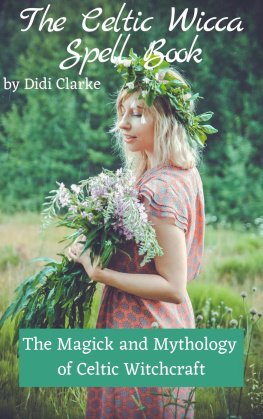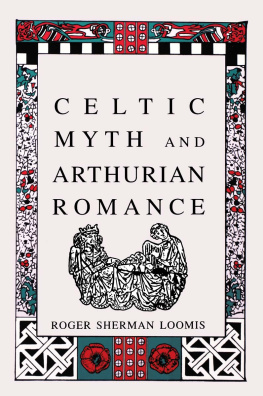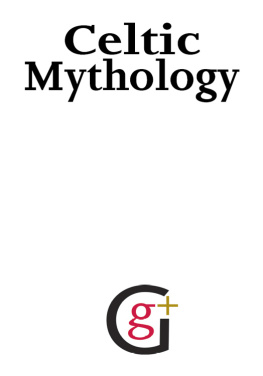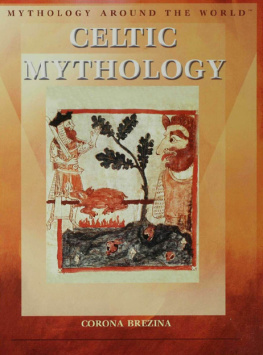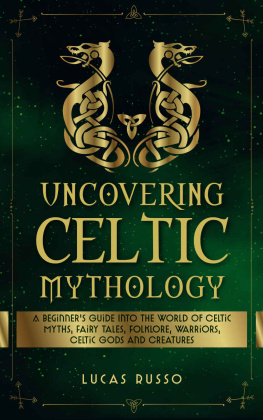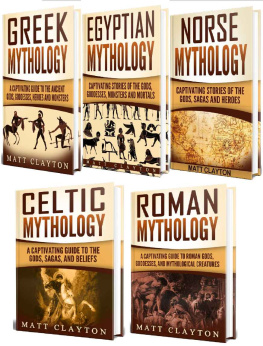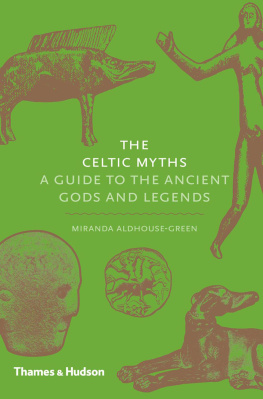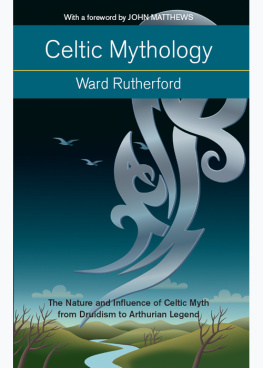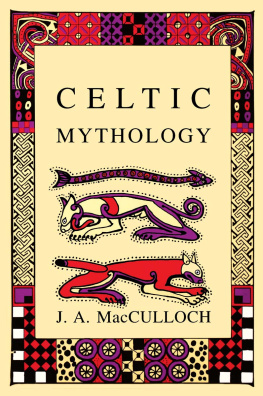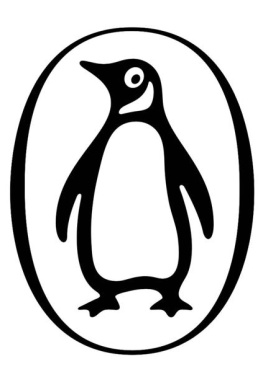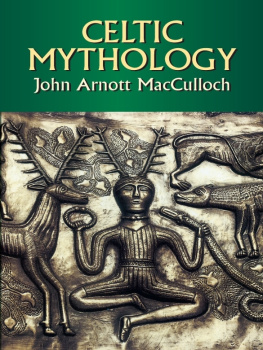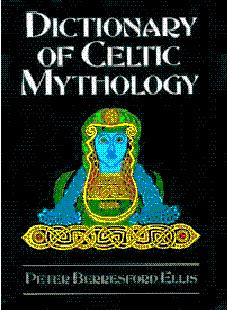
New Approaches
to Celtic Religion
and Mythology
CELTIC MYTH
IN THE
ST CENTURY
NEW APPROACHES
TO CELTIC RELIGION AND MYTHOLOGY
Series Editor
Jonathan Wooding, University of Sydney
Editorial Board
Jacqueline Borsje, University of Amsterdam
John Carey, University College Cork
Joseph F. Nagy, University of California, Los Angeles
Thomas O Loughlin, University of Nottingham
Katja Ritari, University of Helsinki
New Approaches
to Celtic Religion
and Mythology
CELTIC MYTH
IN THE
ST CENTURY
THE GODS AND THEIR STORIES
IN A GLOBAL PERSPECTIVE
EDITED BY
EMILY LYLE
UNIVERSITY OF WALES PRESS
2018

The Contributors, 2018
All rights reserved. No part of this book may be reproduced in any material form (including photocopying or storing it in any medium by electronic means and whether or not transiently or incidentally to some other use of this publication) without the written permission of the copyright owner. Applications for the copyright owners written permission to reproduce any part of this publication should be addressed to the University of Wales Press, 10 Columbus Walk, Brigantine Place, Cardiff CF10 4UP.
www.uwp.co.uk
British Library CIP Data
A catalogue record for this book is available from the British Library.
ISBN: 978-1-78683-205-4
e-ISBN: 978-1-78683-207-8
The right of the Contributors to be identified as authors of this work has been asserted in accordance with sections 77 and 79 of the Copyright, Designs and Patents Act 1988.
The publisher has no responsibility for the persistence or accuracy of URLs for any external or third-party internet websites referred to in this book, and does not guarantee that any content on such websites is, or will remain, accurate or appropriate.
Cover image: Cernunnos, the Celtic horned god. Detail from the Gundestrup Cauldron, c.100 BCE (Heritage Image Partnership Ltd/Alamy).
Cover design: Olwen Fowler.
CONTENTS
Jonathan M. Wooding, Series Editor
Elizabeth Gray
John Carey
Joseph Falaky Nagy
Brian Lacey
Grigory Bondarenko
Maxim Fomin
Sharon Paice MacLeod
Fach Bihan-Gallic
Emily Lyle
Anna June Pag
John Shaw
James Carney
PREFACE
T his publication stems from an initiative at the University of Edinburgh begun when Professor Rob Dunbar became head of the department of Celtic and Scottish Studies in 2013. At that time, he encouraged the holding of a colloquium on Thinking about Celtic Mythology in the 21st Century, with a board consisting of Professor Dunbar, Professor Wilson McLeod, Dr John Shaw and myself. The first colloquium was small but stimulating, and led to the holding of further colloquia on the same topic in 2014 and 2015. All the contributors to this volume, except Brian Lacey, attended one or more of these gatherings.
When a call for contributions to this proposed publication was circulated, an advisory board was established, consisting of John Carey, Rob Dunbar, Elizabeth Gray, Barbara Hillers, John Koch, Wilson McLeod, Daniel Melia, Joseph Nagy, John Shaw and Jonathan Wooding, and I am grateful to all these scholars for their careful work. I am especially indebted to Elizabeth Gray, who advised on all the contributions, and to Wilson McLeod, who kindly undertook the burden of final preparation.
Happily, the University of Edinburgh initiative coincided with the establishment of the University of Wales Press series entitled New Approaches to Celtic Religion and Mythology, under the editorship of Jonathan Wooding, and this book seemed to find its natural place in that development. I should like to thank the members of the Press for their friendly help in the process of bringing the book to publication.
Emily Lyle, Editor
LIST OF ILLUSTRATIONS
LIST OF ABBREVIATIONS
ATU | Aarne-Thompson-Uther |
BB | Book of Ballymote |
(e)DIL | (Electronic) Dictionary of the Irish Language |
LL | Lebor Laignech |
RIA | Royal Irish Academy |
SDD | Suidigud Tellaig Temra |
TBF | Tin B Frach |
TCD | Trinity College Dublin |
TDG | Truigheacht Dhiarmada agus Ghrinne |
YBL | Yellow Book of Lecan |
LIST OF CONTRIBUTORS
is a doctoral student in Gaelic Studies at the University of Aberdeen.
is a General Director of LRC Publishing House, Moscow, and is the author of Studies in Irish Mythology .
is Professor of Early and Medieval Irish at University College Cork.
is Senior Research Associate in Psychology at Lancaster University.
is Senior Lecturer in Celtic at Ulster University.
is an Associate of the Department of Celtic Languages and Literatures at Harvard University, having previously held posts there as Assistant and Associate Professor.
, a former lecturer at Ulster University, was Director of the Discovery Programme for advanced research in Irish archaeology from 1998 to 2012.
is an Honorary Fellow in the Department of Celtic and Scottish Studies at the University of Edinburgh.
is the Henry L. Shattuck Professor of Irish Studies at Harvard University and Professor Emeritus of Celtic and Folklore at the University of California, Los Angeles.
is a Lecturer in the Institut fr Sprachwissenschaft at the University of Vienna.
is the author of Celtic Myth and Religion: A Study of Traditional Belief and Director of the Elas ar Senchais research project, funded by the Canada Council for the Arts.
served as Senior Lecturer in Scottish Ethnology in the Department of Celtic and Scottish Studies, University of Edinburgh, where he is currently an Honorary Fellow.
is Professor of Celtic Studies at the University of Sydney.
INTRODUCTION: CELTIC MYTH IN THE 21ST CENTURY
Jonathan M. Wooding, Series Editor
C eltic Studies is a field long connected with the study of mythology. In the western European context the Celtic-speaking peoples have been amongst those most often held up as the inheritors of a rich body of tradition. From early descriptions of the Gauls through to modern accounts of Scottish Highland culture we find a recurrent emphasis on oral culture and a concern with the supernatural in daily life. In modern scholarship Celtic languages developed a strong connection to the discipline of comparative Indo-European philology and, in turn, to theories of comparative mythology that are its by-products. Aside from these external perspectives, a primary stimulus of interest for mythologists is the very strong sense of the mythic present within Celtic literature itself; reference to deities, to heroes with supernatural qualities, and to events of the distant past. For these reasons, studies of Celtic religion, folklore and literature have very often been made subject to mythological models of interpretation.


